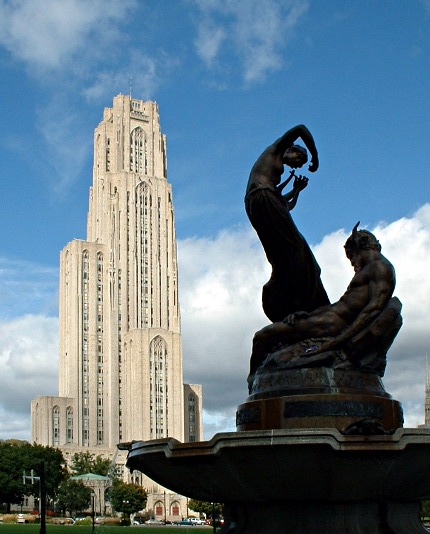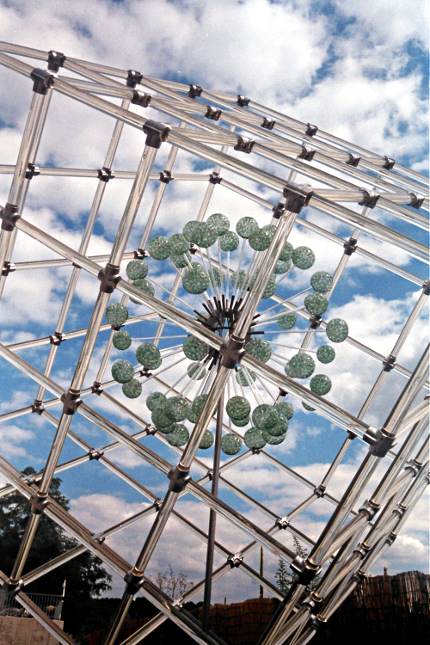
It’s that time of year: pumpkins fresh from the fields, brilliant autumn leaves, and ghost lynchings. We see all of them here at Shenot Farms outside Wexford.

It’s that time of year: pumpkins fresh from the fields, brilliant autumn leaves, and ghost lynchings. We see all of them here at Shenot Farms outside Wexford.

The Mary Schenley Memorial Fountain in Oakland, with the Cathedral of Learning in the background. Both have recently been restored. Somewhere underneath that fountain lies a buried bridge, left there when a hollow was filled in to make Schenley Plaza.
The Eberhardt and Ober brewery in Dutchtown was a Pittsburgh institution. Its beer was affectionately known as E & O—for “Early & Often,” as the advertisements put it. Mr. Eberhardt and Mr. Ober now rest side by side in the Allegheny Cemetery in matching but not identical mausoleums.



In the nineteenth century, churches usually built their cemeteries outside the city. At the turn of the twentieth, when the rapidly expanding streetcar lines triggered a storm of new development all around Pittsburgh, many of those cemeteries ended up surrounded by crowded urban neighborhoods. This one in Beechview is not quite forgotten; someone comes to mow it two or three times a year, but much of it is so overgrown by now that it’s immune to the mower.





A worn face on a worn urn in Mellon Park seems immemorially ancient. It isn’t, but it’s old enough to remember when the park was a millionaire’s private playground.

The narrow streets and sudden drops in Troy Hill make for some unusual adaptations. Stuffed into a tiny lot, Grace Lutheran Church is as tall as it is long, with its main sanctuary on the second floor. It’s impossible to get a picture of the building without wires in front, and removing the wires with an image editor would be dishonest, which is Father Pitt’s way of saying “too much work.”
Phipps Conservatory is being held up as an example of what makes Pittsburgh a model to the world. Troops of presidents and prime ministers will shortly descend on it, and yesterday the place was crawling with State Department suits flashing their badges and working out the thorny details of who stands where for the photo opportunities.
It would be hard to think of a better showpiece for Pittsburgh. This is one of the world’s most beautiful glasshouses, a rare relic of classic Victorian Gothic conservatory architecture. Yet it has adapted to the modern age with a new entry and a spectacular tropical forest, both of which are remarkable for their use of “green” technology. The new entry, seen here, harmonizes well with the original greenhouses; yet the design is clearly a product of our own age. Pittsburgh can help teach the world how to make the old new again; and perhaps, in teaching that lesson, we can learn it better ourselves.

Hans Godo Fräbel is hard to pin down. Sometimes his style is abstract, sometimes breathtakingly realistic—or perhaps the word is surrealistic, with realistic figures in impossible situations. In every style his glass is impeccably precise. Dale Chihuly’s works seemed to grow organically from the soil of Phipps Conservatory; in the same setting, Fräbel’s glass almost seems to have been generated by a computer incapable of imperfection.


